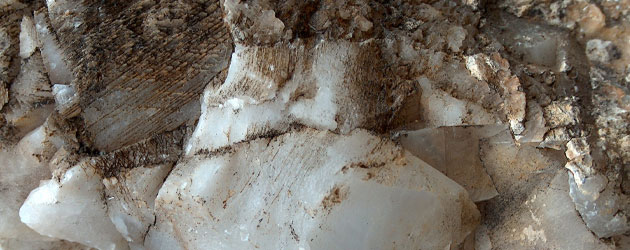CALCIUM CARBONATE

Typical sedimentary mineral, both by direct chemical precipitation from the evaporation of supersaturated solutions, and by sedimentation of the organic remains of marine organisms that use calcium carbonate as a constituent in their shells.
It can also originate in metamorphic and, rarely, magmatic rocks, where it is deposited in the fractures in which the high temperature, oversaturated fluid circulates.
It is one of the minerals with the most heterogeneous shape and color, generally rhombohedral, but also scalenohedral, tabular and prismatic. It can originate granular, columnar or lamellar aggregates, as in caves, or zoned accretions as in ooliths. Depending on its inclusions, its color, can range from white, to pink, yellow, brown and green.
It often has is fluorescent under ultraviolet light, with red, yellow, pink and light blue colors, and it can also be thermoluminescent. Its completely soluble in hydrochloric acid, with a typical and lively effervescence. Specific and typical of this mineral is its birefringence.
Some of the rocks which are composed mainly of this mineral are among the most in demand and popular for building and architecture

